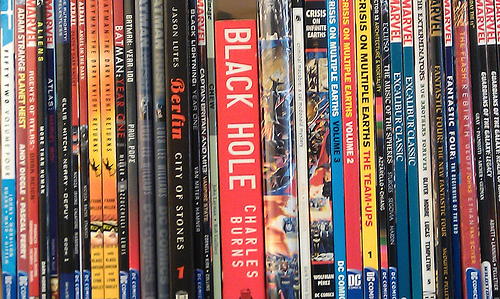What qualities make a comic or graphic novel linger in the genre’s memory? Which comics of 2000-2014 will we still be reading and discussing in 2064?
This was the subject of a panel at the recent LonCon, at which, comics authors Maura McHugh, David Baillie and Hannah Berry, publisher John Anderson, and comics enthusiasts Adam Rakunas and myself discussed the famous, the obscure, the deserving, and the overhyped in the last fifteen years of international comics publishing. We also looked back at comics from 50 years ago, to see what qualities have helped past titles stand the test of time.
Before I list our suggested comics, I want to review our look at comics from fifty years ago. Any guess at a future canon is particularly challenging in a medium so dominated by the fast-flowing rush of whatever is the new “big thing.” Even in the initial list proposed in the panel description. Y: The Last Man (2002-2008) was the notable exception to a selection saturated with extremely recent series, Saga (2012-present), The Wake (2013-2014) and Image comics’ Lazarus (2013-present), plus two refreshed in public memory by recent translations and adaptations, Snowpiercer (Le Transperceneige, 1982) and Attack on Titan (2009-present). Already in 2014, works of 2000 to 2010 are being eclipsed. Yet short-term success or obscurity don’t necessarily translate to the long-term.
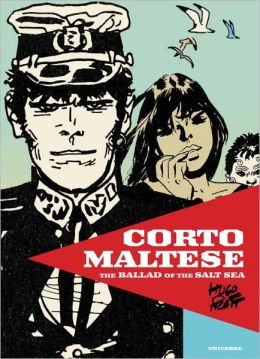
For one, there are several different ways a comic can circulate fifty years after its release. Very few works from 50 years ago are still commonly read and enjoyed the way we read new ones: Italy’s Corto Maltese (Hugo Pratt, 1967) and Japan’s Astro Boy (Osamu Tezuka, 1952-68) are standard stock for every bookstore in their native countries, and common in translations around the world, yet it is common for lists of top 50 graphic novels (especially those concentrating on English language works) to include nothing from before the later 1980s.
When I run across older works on bookstore shelves, they are most often nostalgia anthologies, works like early Mickey Mouse and Donald Duck comics, collected Punch or early Batman. These flourish in present publication, but are aimed, not at new readers, but at collectors who already love the characters, or at comics enthusiasts interested in the history of the genre, classic characters, or the evolution of sequential art. It is impossible to say whether such titles will survive over multiple generations.
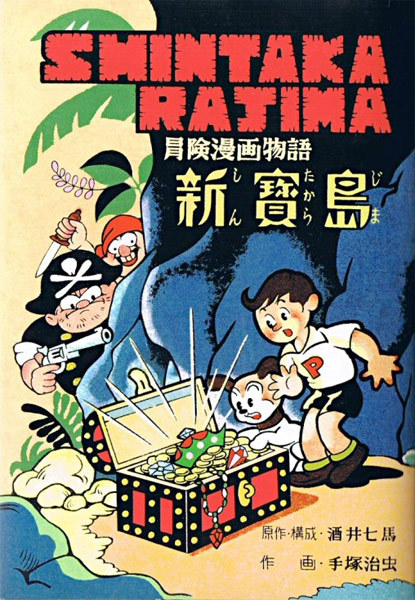
Other titles, including many we consider seminal and still important, survive as footnotes in histories of comics but are rarely actually read. In my own work on manga history, I see critics constantly mention Osamu Tezuka’s first full-length published work New Treasure Island (1947, available in Spanish, not yet English), which was the vanguard of the post-WWII manga boom, inspiring and shaping the new age of post-war modern manga. Yet, when histories of comics talk about it, they inevitably discuss how it initiated the “cinematic style” and include one of three stock pages as an example, but never discuss its overall story, making it clear that even many experts in the field have never bothered to read it cover-to-cover. We acknowledge it as an important early example, but prefer to read, enjoy and remake the more mature stories of the same type that have aged better, like Metropolis and Astro Boy.
Thus, when considering how current top titles may be remembered in fifty years, I see it as a separate question which titles may still be read in full, which may be read only by specialists, and which may survive only in footnotes as the initiators of trends of which we prefer to read later examples. For example, Attack on Titan is currently huge, and deservedly so, in my opinion, because it got great power out of its trick of hybridizing the genres of mehca and survival horror, which (within manga at least) each have very rigid stock narrative structures, so the hybrid constantly betrays the reader as it switches from one formula to the other, shocking and surprising us and breathing new vividness into the familiar.
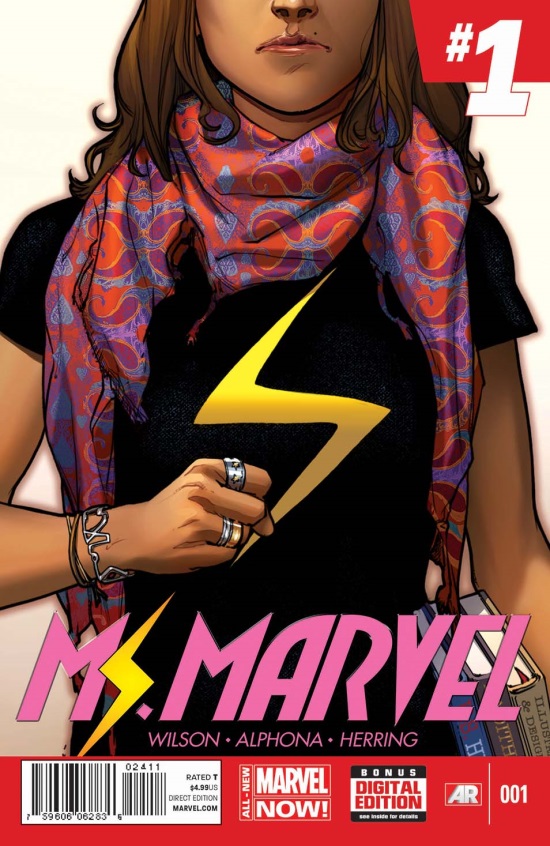 Yet this technique has already been picked up by Knights of Sidonia which triple-mixed mecha and survival horror with space opera, so who is to say whether Attack on Titan will be remembered for itself or for some other work which will come in the next decade for which it was the enabling footnote. In an odd sense, this kind of eclipsing is, for the broader genre, a good thing, since it means other titles have done even greater things than the original; I, like many, am delighted by the progressive move Marvel comics has taken in the new Ms. Marvel, Kamela Kahn, a Pakistani-American Muslim, but I will be even happier if she becomes a mere footnote, eclipsed by more and more mainstream comics titles focusing on such diverse protagonists.
Yet this technique has already been picked up by Knights of Sidonia which triple-mixed mecha and survival horror with space opera, so who is to say whether Attack on Titan will be remembered for itself or for some other work which will come in the next decade for which it was the enabling footnote. In an odd sense, this kind of eclipsing is, for the broader genre, a good thing, since it means other titles have done even greater things than the original; I, like many, am delighted by the progressive move Marvel comics has taken in the new Ms. Marvel, Kamela Kahn, a Pakistani-American Muslim, but I will be even happier if she becomes a mere footnote, eclipsed by more and more mainstream comics titles focusing on such diverse protagonists.
This differentiation of what is read from what is remembered as a footnote is enhanced, in comics and elsewhere, by canon formation, and the tendency of people to say, “If you only read one example of X read this one.” Just as English classes typically assign Tess of the d’Urbervilles and Moby Dick in preference to other Hardy or Melville, so in fifty years’ time reading conventions will likely have settled on one canonical graphic novel to represent Jill Thompson, Grant Morrison, Maurício de Sousa, Moebius (Jean Giraud), Neal Gaiman etc.
As one of my fellow panelists pointed out, in the case of Alan Moore, we can’t be certain Watchmen will become the stock example not some other work. Revolutionary as it is, Watchmen is so closely tied to its Cold War context that the authors of the movie script already felt it necessary to add a more modern environmentalist subplot to make it more approachable for modern teens, while future generations of readers may prefer From Hell, which is more temporally independent, or V for Vendetta, which has such a conspicuous place in current politics thanks to protestors adopting its Guy Fawkes mask. For all we know, that mask could survive past everything, as ancient Roman comic and tragic masks are recognized by many modern people who don’t have any idea where they come from; or the V mask could be forgotten, like the many other masks of ancient Rome of which only classicists can name.

Our discussions in the panel yielded lists of several different kinds of exciting recent titles or comics creators which we think might be remembered, for different things and in different ways. I will list here those which came up on the panel, but please keep in mind that these are examples, not intended to be comprehensive or exclusive. If you have more suggestions, please add them in the comments, especially examples of works from outside the English-speaking world, since our all-Anglophone panel naturally had more access to English-language comics.
We discussed the question of exciting and promising authors who seem certain to leave their mark, but who haven’t yet written one specific work which seems likely to rise above the others. One could tell by 1965 that Osamu Tezuka and Stan Lee were giants of the comics world, but not yet which of their many creations would still be on lunchboxes in 2015. Excluding the most obvious (since it is obvious to anyone that One Piece and Naruto will be remembered at least as footnotes in 50 years), here are some suggestions for current artists and authors many of us are keeping an excited eye on:
- Becky Cloonan, an illustrator who, among many other titles, worked with author Brian Wood on Demo (2010) and Channel Zero (2003).
- Brandon Graham developed out of graffiti art through some pornographic work to write titles such as Escalator (2005) and Image’s Prophet (2012-).
- Junji Ito is continuing to push the boundaries of horror manga, and may soon be expected to surpass his previous best-regarded work Uzumaki. (More about Ito.)
- Paul Pope, repeated Eisner award winner, known currently for Batman: Year 100 and Battling Boy among many other titles.
- World Fantasy Award winner Shaun Tan has produced numerous powerful works whose lush storybook style make them appeal to mainstream as well as comics readers; The Arrival (2006) has circulated most, but it is hard to say which may become the canonical example.
- Naoki Urasawa is an internationally acclaimed manga artist whose works have grown increasingly ambitious in the last decades (especially those written in collaboration with Takashi Nagasaki), including such titles as 20th Century Boys (1999-2006), Pluto (his stunning adaptation of the darkest story arc of Tezuka’s Astro Boy; 2003-2009), and now the ongoing Billy Bat (2008-).
- Fumi Yoshinaga was the first comics artist honored by the Tiptree awards, for her powerful feminist secret history ?oku (2005-), and thanks to that fame more of her titles, such as What Did You Eat Yesterday? (2005-) and her autobiographical one-shot Not Love But Delicious Foods Make Me So Happy are receiving international recognition.

We also discussed, as extra-likely to survive, those comics that treat literary, political, artsy, highbrow or other subjects of types considered especially respectable by the literary mainstream. Art Speigelman’s Maus, Keiji Nakazawa’s Barefoot Gen and Vittorio Giardino’s A Jew in Communist Prague have demonstrated how even the most elitist 20th century critics were won over by treatments of the century’s great traumas. Literary and political interest far outside the realm of comics readers can help keep such titles in print for decades. So far the 21st has yielded several similar works:
- Persepolis, by Marjane Satrapi (2000-2003), an autobiography about a young woman’s life in Iran.
- Town of Evening Calm, Country of Cherry Blossoms by Fumiyo Kono (2003-2004), is a treatment of the long-term aftereffects of exposure to the Hiroshima bomb, joining Shigeru Mizuki, Osamu Tezuka, Hideshi Hino, Keiji Nakazawa and many others who have used manga to critique and express the Japanese experience during WWII.
- Mom’s Cancer (2005) by Brian Fies, is another award-winning autobiography treating a common dark facet of modern life, and probably more likely to enter long-term than his more recent touching treatment of the slow pace of recent social progress, Whatever Happened to the World of Tomorrow?
- Sally Heathcoate: Suffragette, by Bryan Talbot, Mary Talbot and Kate Charlesworth, certainly treats the kind of popular mainstream progressive subject which could let it eclipse Bryan Talbot’s many other more traditional comics titles, and even his earlier joint venture with Mary, Dotter of Her Father’s Eyes.
- Footnotes in Gaza (2009), The Fixer: A Story from Sarajevo (2003), Palestine (1996), and The Great War (2013), his wordless depiction of the opening of WWI.

Another category are the more imaginative and transformative examples of titles within the comics mainstream, variations on superhero titles, adventure comics and others coming from Marvel, DC, Vertigo or Image, which enjoy dominant positions on the shelves of corner comics’ shops. Among the more inventive of these in recent years have been All Star Superman (2006-2008), Superman: Red Son (2003), Saga (2012-), Y: The Last Man (2002-2008), Ex Machina (2004-2010), recent Hawkeye, Animal Man and Doom Patrol (20), and the long-awaited “Silver Agent” arc of Astro City.
Another very different group are those producing more stylized specialist comics, especially radical and underground comics artists, exciting for how they use the stylized medium of graphic narrative, and push boundaries. Many of these are medium-obscure today, known mainly to serious comics aficionados, but that type of notoriety may be more likely to last when the bulk of casual readers have moved on to the new big thing. For example, Junko Mizuno produces gruesome hyper-cute stylized works (imagine My Little Pony x Titus Andronicus); she works slowly, but her recent Little Fluffy Gigolo Pelu (2003-2005) is already trying more ambitious things than her previous longest work Pure Trance (1998), and it is reasonable to expect that her most ambitious works lie ahead.
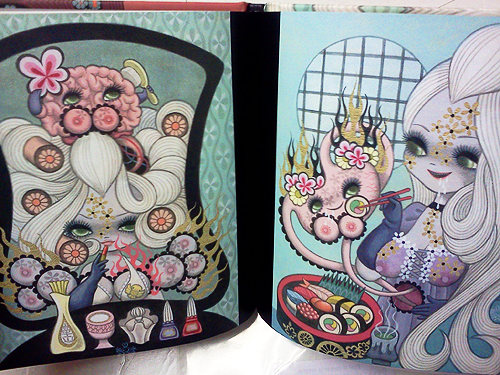
Similarly, Yuichi Yokoyama is pushing the boundaries of extreme abstraction in works like Garden, fascinating but definitely only for those already deeply interested in comics art, and Asumiko Nakamura’s recent work, especially her two color printed pieces like Piano, have pushed the aesthetic boundaries of gothic manga, but no one work of hers has risen to prominence or received international attention. And in Western comics, now that Larry Marder is doing less administrative work for Image Comics he is finally working on finishing his minimalist anthropological/cultural epic Beanworld, and the final volumes seem likely to be the most powerful.
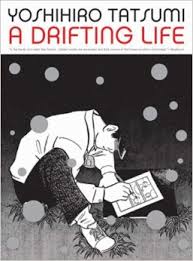
Also extra-likely to last at least on the shelves of serious comics readers are comics about comics, i.e. that treat the history and construction of comics from the inside, which comics enthusiasts and critics will always need as references. For example, Scott McCloud has followed his earlier seminal Understanding Comics (1993) with Reinventing Comics (2000) and Making Comics (2006), all references likely to be consulted by comics critics for many decades to come. On the Japanese end, Yoshihiro Tatsumi’s A Drifting Life (2008) documents the development of post-WWII manga, especially gekiga.
Other titles brought up by panelists over the course of our discussion included:
- Alex Robinson’s Box Office Poison
- Ursula Vernon’s Digger
- Craig Thompson’s Blankets
- Jeff Smith’s Bone
- Joe Hill & Gabriel Rodriguez’s Locke & Key
- David Mazzucchelli’s Asterios Polyp
- Joe Matt’s The Poor Bastard
- Stan Sakai’s Usagi Yojimbo
- Gareth Brooks, various
- Seth (Gregory Gallant), George Sprott and Clyde Fans
- Mike Carey & Peter Gross’s The Unwritten
- Ed Brubaker & Sean Phillips, Criminal, also Fatale
- Phonogram
- Chris Ware’s Building Stories and Jimmy Corrigan: The Smartest Kid on Earth
- Jason (Jason Arne Sæterøy) works including I Killed Adolf Hitler, and Hey, Wait…
- Various innovative works published by Soaring Penguin Press
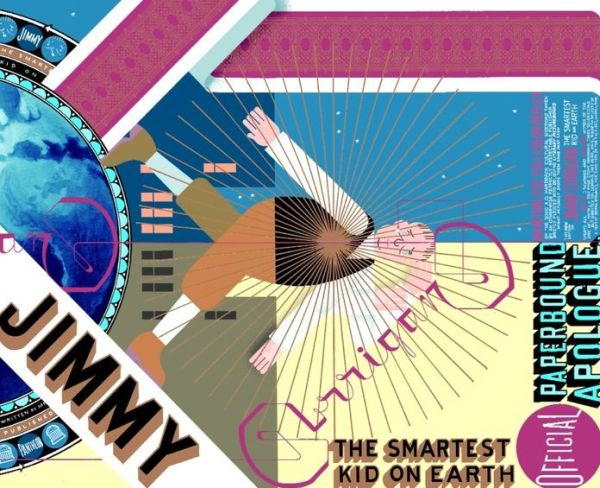
These names are the result of brainstorming rather than systematic thought, a quick picture of what six people who try to keep up with comics as best we can could come up with in an hour. If you have more to add, works or artists you think may survive either in common readership or in footnotes in 2064, please post a comment.
Ada Palmer is an historian, who studies primarily the Renaissance, Italy, and the history of philosophy, heresy and freethought. She also studies manga, anime and Japanese pop culture, and has consulted for numerous anime/manga publishers. She writes the blog ExUrbe.com, and composes SF & Mythology-themed music for the a cappella group Sassafrass. Her first novel is forthcoming from Tor in 2015.










